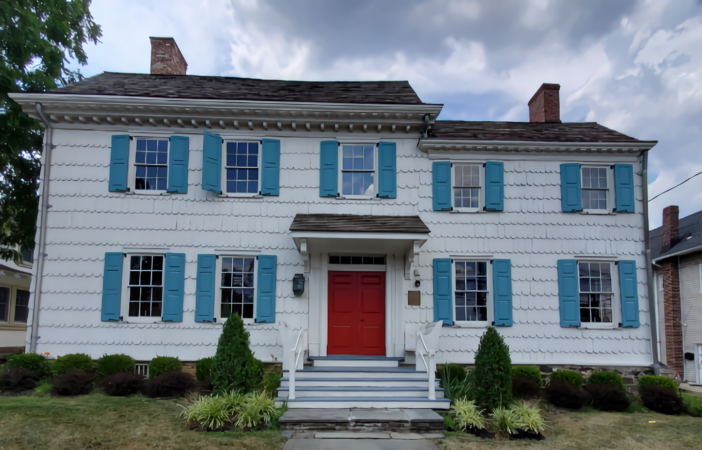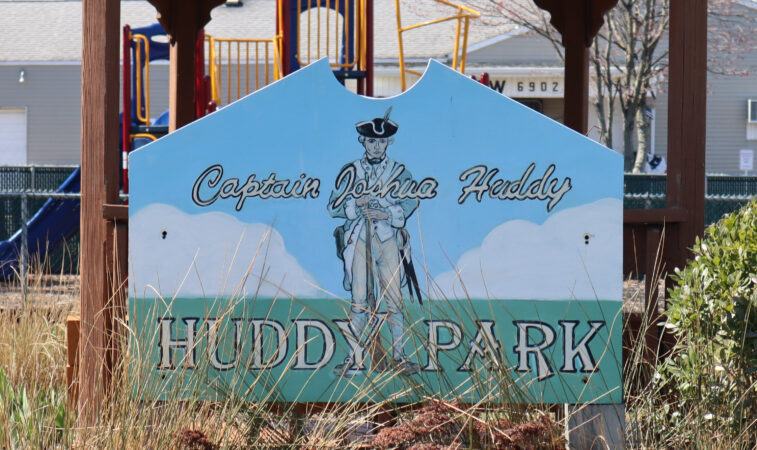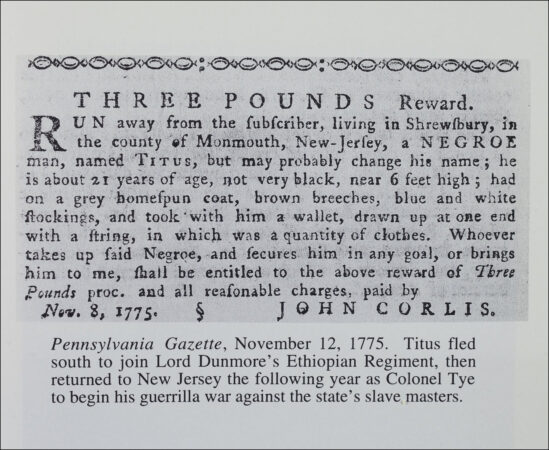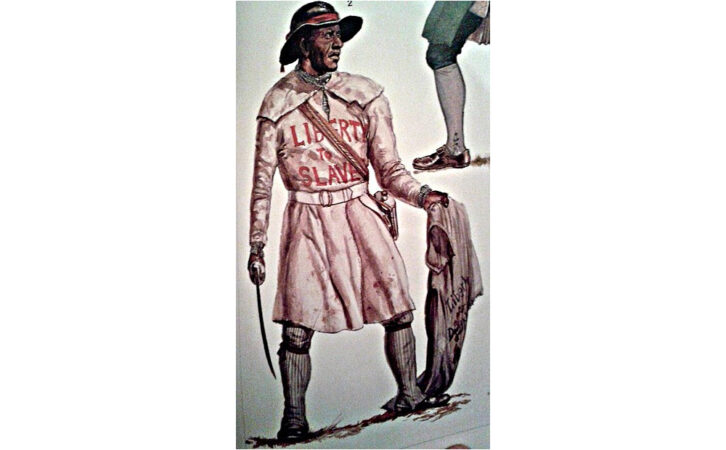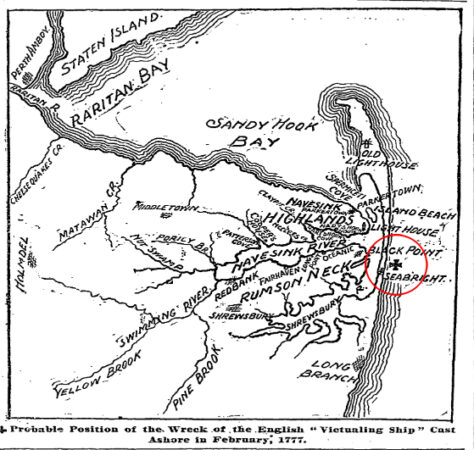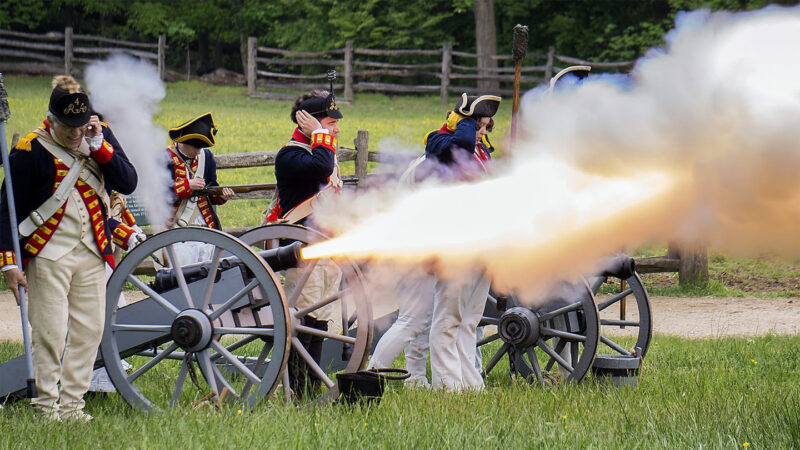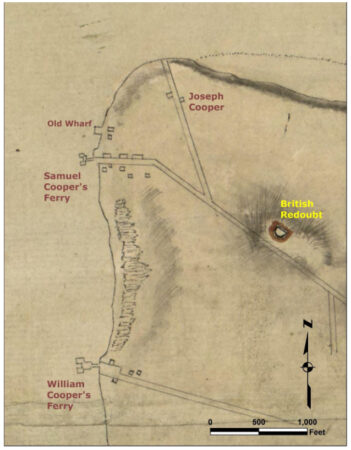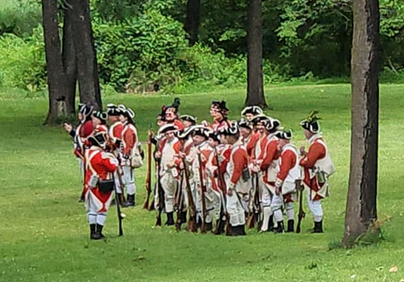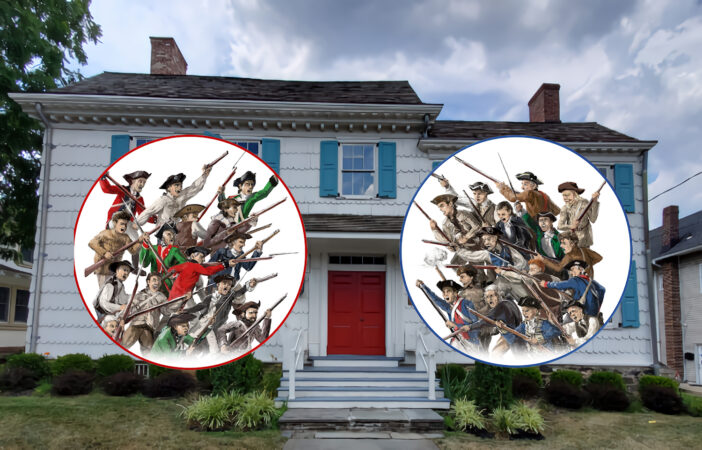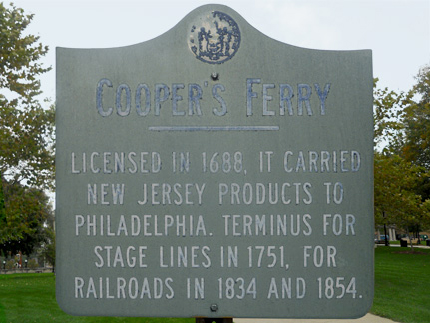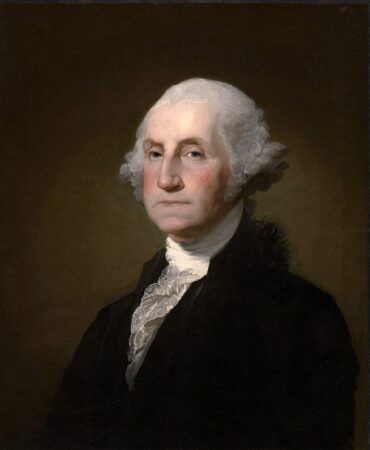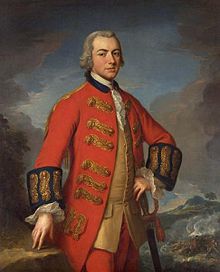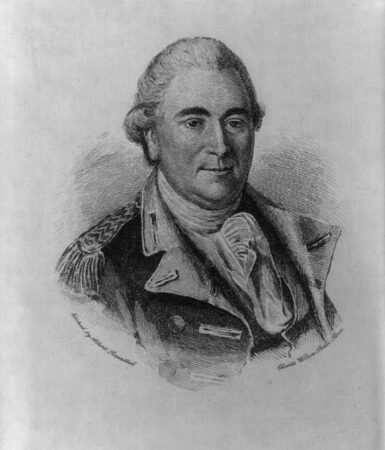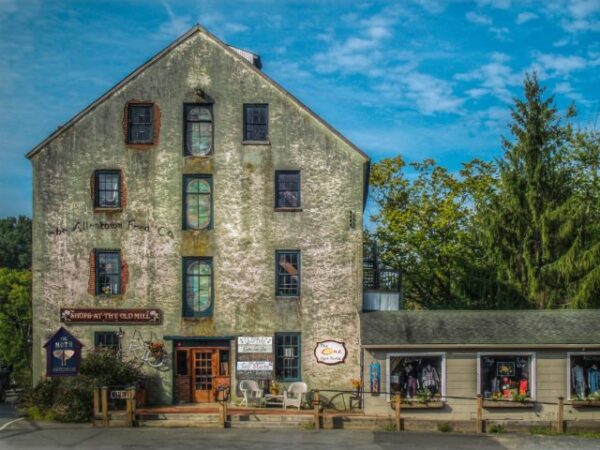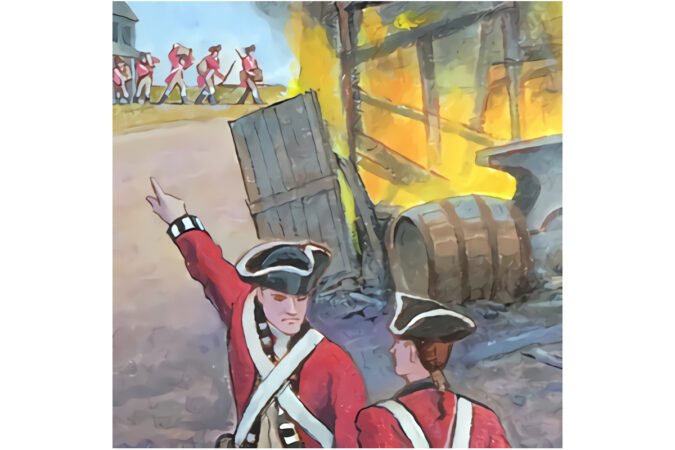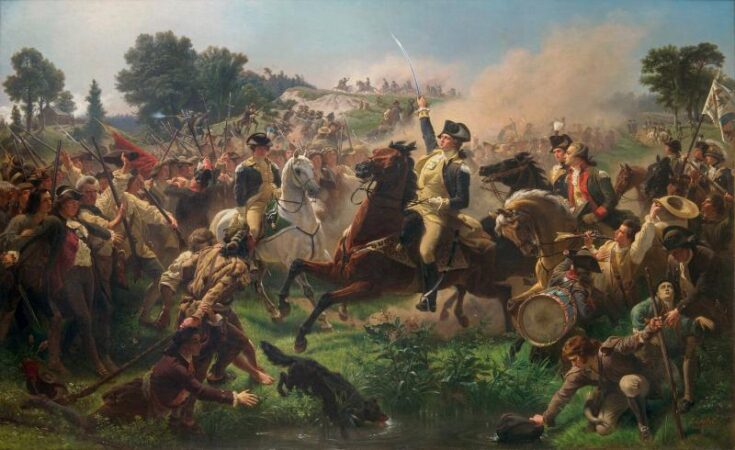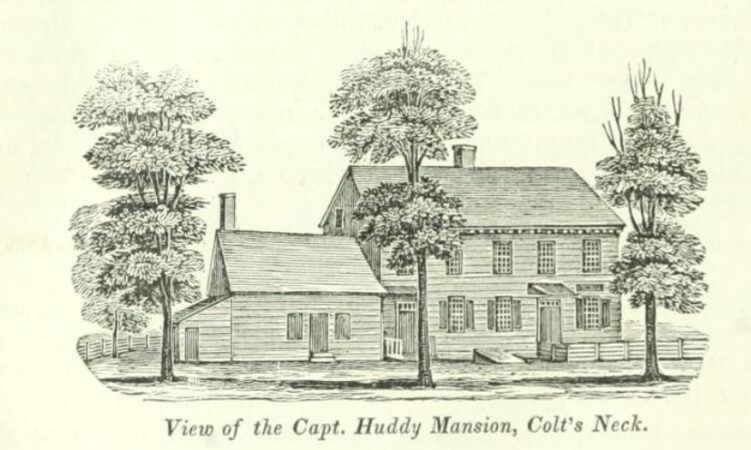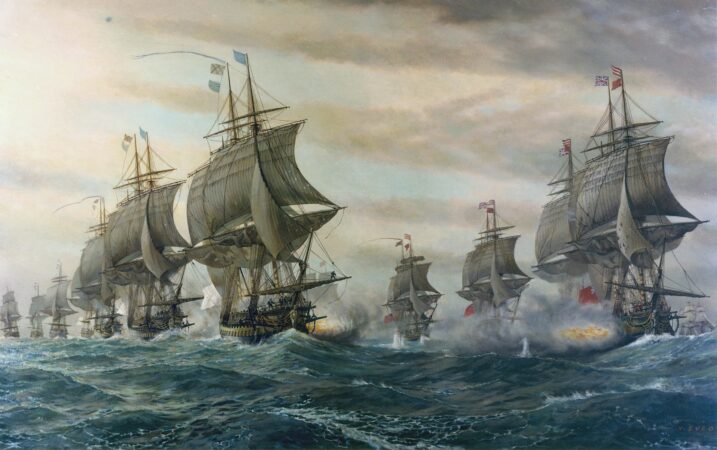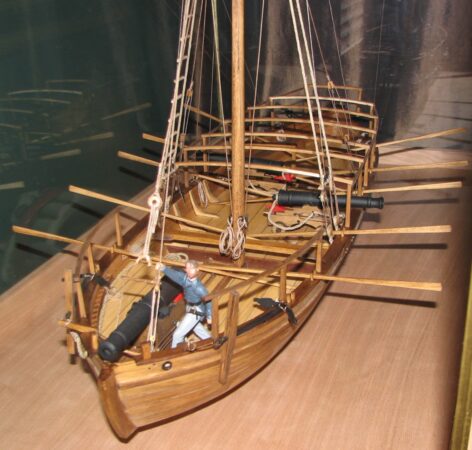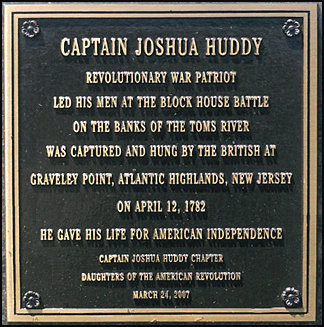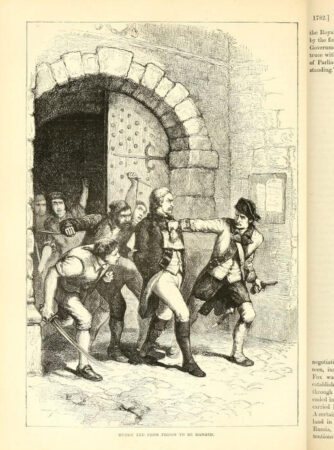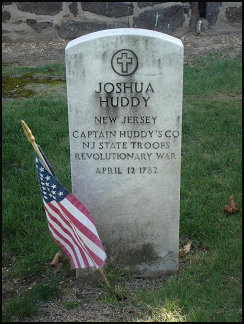Revolutionary War
June 3, 1723
The Burrowes Mansion Museum
Editor's note: The following text and images are provided by and used with permission from the Matawan Historical Society. The Burrowes Mansion was built in 1723 by John Bowne III. It is one of Monmouth County’s most important early...
November 8, 1735
A Timeline of Patriot Martyr Joshua Huddy
Joshua Huddy was a Revolutionary War soldier who became renowned through his untimely death: he was hung by American Loyalists at Highlands in 1782, months after the Battle of Yorktown, the last major military engagement of the war. Patriot outrage...
November 8, 1775
A Timeline of the Escaped Slave Titus who Became the Dreaded Loyalist Raider Colonel Tye
On November 8, 1775, a 22-year-old slave named Titus ran away from his owner and master, John Corlies of Colts Neck. Corlies was a Quaker who did not agree with Monmouth County Quaker views on the handling of slaves. Quakers during...
November 15, 1775
Titus Becomes Tye in Lord Dunmore’s Ethiopian Regiment of Black Loyalist Soldiers
On November 15, 1775, the former Colts Neck slave named Titus, now calling himself simply "Tye," took part in the first armed conflict in American history involving an organized unit of African American soldiers. But they were fighting for the...
February 13, 1777
Battle of the Navesink
On February 13, 1777, the militia of Monmouth County suffered “most severely” in an engagement known as the Battle of the Navesink, which took place in the area that is now Rumson and Highlands, and Sea Bright. Particularly during...
September 24, 1777
New Jersey Militia Artillery Captain Joshua Huddy
In 1776, Huddy joined the New Jersey militia and on September 24, 1777, became a captain of artillery. That year, he gladly pulled the rope to hang Stephen Edwards, a New Jerseyan who had been spying for the British. After...
May 3, 1778
Battle of Monmouth – How It Begins
On May 3, 1778, the British establish a post at Cooper's Ferry, near where Camden is today, to protect wood cutters. The British army in Philadelphia has been ordered to evacuate the city, to focus resources on their strongholds in...
May 14, 1778
British Army Ships Supplies to New York Ahead of Philadelphia Evacuation
On May 14, 1778, the British army prepares to move across the Delaware river by packing heavy baggage to be shipped to New York. In six weeks, they will encounter George Washington's Continental Army, aided by New Jersey militia (re-enactors...
May 27, 1778
The Raid on the Burrowes Mansion
Editor’s note: The following text and image are provided by and used with permission of the author and the Matawan Historical Society, with the exception of the Monmouth County Loyalists & Patriots, ©2023 Charlie Swerdlow, commissioned by Monmouth Timeline. The...
May 29, 1778
British Army Begins Relocation Process from Philadelphia to New York City
On May 29, 1778, the British army begins the process of evacuating Philadelphia, and relocating to New York City, by deploying two regiments across the river at Cooper's Ferry, near Camden, to reinforce the garrison there. New Jersey militia are...
June 1, 1778
The British Prepare to Enter New Jersey at Cooper’s Ferry
With orders to relocate to New York City, the British army spends two weeks establishing a post at Cooper's Ferry, near Camden, across the Delaware River from Philadelphia. On June 1, 1778, the British begin moving wagons and provisions across...
June 14, 1778
The British Prepare to Evacuate Philadelphia
On June 14, 1778, the British army prepared to leave Philadelphia behind, and relocate to New York City. They destroyed unservicable equipment and stock, and burn unfinished ships, so as not to give the patriots any useful resources. British General...
June 18, 1778
British Evacuate Philadelphia, Head to New York
On June 18, 1778, British General William Clinton completes the evacuation of Philadelphia, concentrating about 20,000 troops and his baggage train in and around Haddonfield Royal Navy. Along with other troops, invalids, loyalists and heavy equipment, the army heads down...
June 24, 1778
The British Arrive in Allentown
On June 24, 1778, after several days of skirmishing and harassment from rebels - both militia and Continental regulars-General Clinton's British army reaches Allentown. Clinton decides to move toward Monmouth Court House (i.e., Freehold), and then cross to New York...
June 26, 1778
The Sack of Monmouth Court House
On June 26, 1778, British troops, under the command of Lieutenant General Sir Henry Clinton, first arrived in Monmouth Court House, now known as Freehold Township. With France entering the American Revolution on the side of the Patriots, the British...
June 28, 1778
The Battle of Monmouth
Editor’s note: The following is adapted from the Battle of Monmouth Fact Sheet published by the Friends of the Monmouth Battlefield. On Sunday, June 28, 1778, an American army of about 14,500, including about 1,000 militia, engaged a British army...
August 12, 1778
Continential Army Major General Charles Lee Convicted at Court-Martial
On August 12, 1778, just two weeks after the Battle of Monmouth during the Revolutionary War, Major General Charles Lee was convicted at his court-martial of all three charges laid against him for his conduct during the early stages of...
October 27, 1778
Joshua Huddy, Innkeeper
On October 27, 1778, Huddy married Catherine Applegate Hart, the widow of Levy Hart, a Jewish tavern keeper in Colts Neck who had died in 1775. Although Protestants, Catherine Applegate and her sister Hannah both married prosperous Jews in Monmouth...
June 10, 1779
The Razing of Tinton Falls: 16 Dead in Waterfront Fighting Between Monmouth County Patriots and Loyalists
On June 10, 1779, a raiding party of about 100 Loyalists left British-controlled Sandy Hook and attacked Tinton Falls for the second time in six weeks, seeking guns, ammunition, food, supplies, and to arrest local leaders of the militia. The...
July 15, 1779
Colonel Tye and his Black Brigade Become the Scourge of Monmouth County Patriots
Col. Tye, now based in Refugeetown on Sandy Hook, along with other escaped slaves, black freedmen, and loyalists from Monmouth County as well as elsewhere. Col. Tye begins a reign of terror, leading raids into his former neighborhoods at the...
December 28, 1779
The Capture of the British Privateer Britannia by the Middletown Militia
By Maureen Foster Sandy Hook and the neighboring Highlands of the Navesink have always played an important role in the safety and defense of New York harbor. During the Revolutionary War (1776-1783), British troops and Loyalist refugees occupied Sandy Hook,...
August 5, 1780
Joshua Huddy, Privateer
On August 5, 1780, Joshua Huddy received a privateer's commission. Though best known for his exploits on land, Huddy also supported the revolutionary cause on water, attacking and seizing British ships both to hamper enemy operations and to earn the...
September 1, 1780
The Fatal Showdown Between Colonel Tye and Joshua Huddy
Original illustration exclusively for Monmouth Timeline, ©2021 by Charles Swerdlow, all rights reserved. In the years following the Battle of Monmouth, residents of Monmouth County engaged in an escalating civil war between residents siding with the Revolutionary cause, and residents...
September 20, 1781
Battle of the Chesapeake
On September 20, 1781, Royal Navy Admiral Graves' fleet sailed from Virginia back to Sandy Hook after sustaining sufficient damage and loss at the hands of the French navy at the Battle of the Chesapeake (also known as the Battle...
October 5, 1781
Privateer Adam Hyler, In Rowboats, Captures Five British Ships
On October 5, 1781, Captain Adam Hyler of New Brunswick led yet another attack on British and Loyalist merchant vessels in Raritan Bay; on this occasion, he and his oarsmen captured five valuable British ships within a quarter mile of...
March 24, 1782
Joshua Huddy is Captured Again; No Escape This Time
On February 1, 1782, Joshua Huddy was given command of the blockhouse at Toms River that was built to protect the local salt works. On March 24, 1782, Huddy finally faced a challenge he could not overcome. Commanding 25...
April 12, 1782
Up Goes Huddy
On April 12, 1782, about six months after the British commander Lord Cornwallis surrendered at Yorktown, effectively ending the Revolutionary War, Patriot militia Captain Joshua Huddy was removed from the infamous British Liberty Street Sugar House prison in New York...
April 14, 1782
Outrage Over the Martyred Joshua Huddy
When a group of Middletowners discovered Huddy’s body hanging from a makeshift gallows on a spring day in 1782, an overturned barrel at his feet and a vengeful placard on his breast, they had no idea that Huddy’s death would...
November 25, 1783
After the Death of Tye, The Black Brigade Soldiers On
Following the death of Colonel Tye, the Black Brigade came under the leadership of the African Bahamian soldier Stephen Blucke, whose Black Pioneers together with the Brigade made frequent raids from Sandy Hook into Long Island and New Jersey even...
February 14, 1837
The Legacy of Joshua Huddy
In 1836, Huddy's surviving daughter, Martha Piatt, wrote to Congress that the nation had never expressed its gratitude to Huddy and asked for money and land for herself and her late sister's children. On February 14, 1837, a special committee of...
June 1, 2023
New Art: Monmouth County Loyalists and Patriots
Editor’s note: The two illustrations detailed below were commissioned by Monmouth Timeline in 2023 to illustrate multiple stories. The artist’s signed prints are currently on loan to the Matawan Historical Society, and are on display at the Burrowes Mansion Museum...
September 15, 2023
Artist Steve Schreiber Talks about his Newest Painting
The Middletown Militia Secures their Prize, December 30, 1779 ©2023 Steve Schreiber. Oil on Hardboard. Commissioned by Monmouth Timeline Inc., donated to Middletown Township Historical Society. Currently on loan and public display at the Middletown Township Public Library, 55 New...

